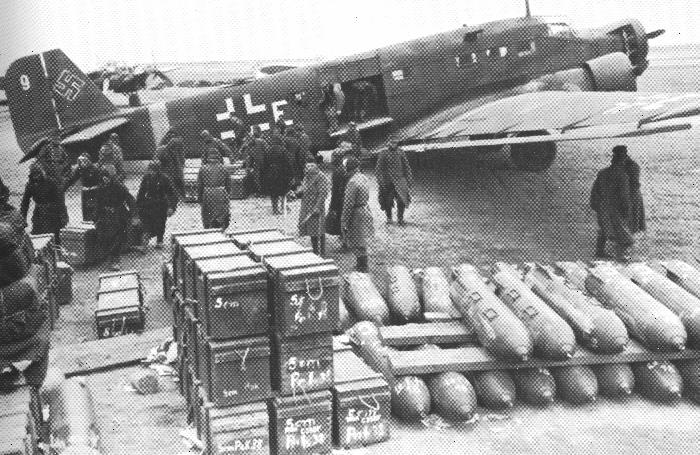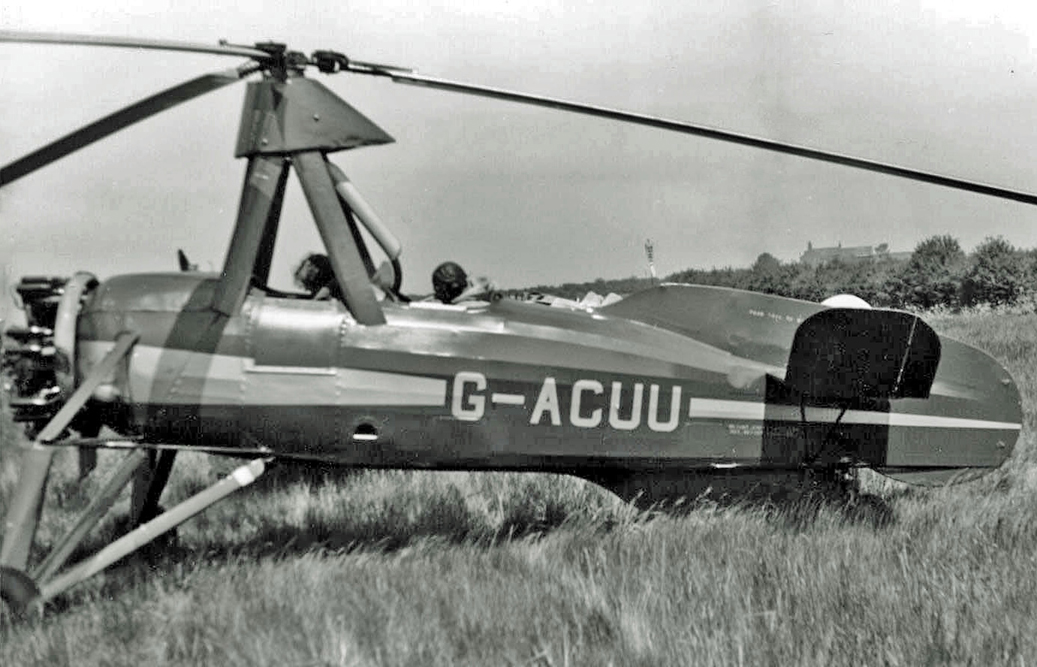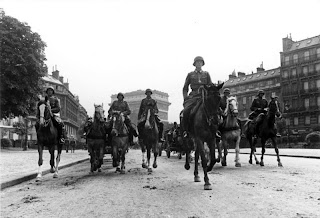The 1969 film "Battle of Britain" was the attempt to capture this effort and memorialize the brave men who fought in the battle. With an all-star cast featuring Michael Caine, Robert Shaw, Curt Jurgens, and Laurence Olivier, this film has the recipe to blow the audience away with epic performances.
 |
| German bombers begin to bomb British airfields on Eagle Day (screenshot) |
Nevertheless, there are some problems with this film. The brief romantic scenes in this movie, meant to show the personal strain the battle had between pilots and their wives and lovers, seemed to be thrown into the mix and not done very well, at times appearing to be an afterthought of the scriptwriters to make this picture something more than a pure war picture, and therefore drag down the picture as a whole. Also, some of the aerial combat scenes tended to be drawn out a bit too long.
Overall, though, this film is a staple for any World War II movie library, as it does a fantastic job in honoring the soldiers who lived and died in the skies above Britain on both sides. Until next time take care, and thanks for reading.
(Image fair use rationale: 1. This image is being used to illustrate the article on the movie in question and is used for informational or educational purposes only. 2. This image is of low resolution. 3. It is believed that this image will not devalue the ability of the copyright holder to profit from the original work. 4. No alternative, free image exists that can be used to illustrate the subject matter.)






















